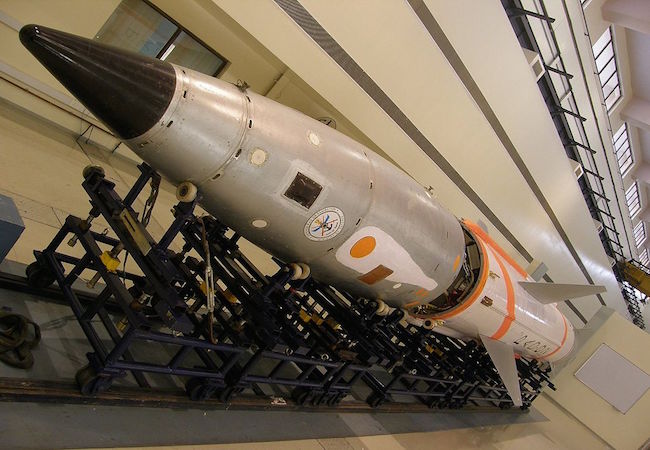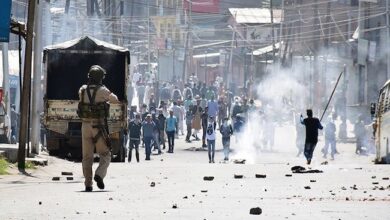
By Maimuna Ashraf
‘Splendid first-strike’ and ‘strategic ambiguity’ are lately being discussed as the twin strong emerging components of Indian nuclear policy. In previous few years, the BJP’s manifesto and views expressed by former Indian officials hinted towards the inside deliberations regarding India’s use of nuclear weapons. This stirred up a number of suspicions; First, India is moving from its No-First Use (NFU) policy. Although the stated stance in its official doctrine of 2003, that undertakes massive nuclear retaliation in response to a preemptive strike (by an adversary) to inflict unacceptable damage and nuclear use against chemical/ biological weapons, have had already questioned the sanctity of India’s NFU posture. The NFU refers to a policy that state possessing nuclear weapon will not use them unless first attacked by an opponent’s nuclear strike. This stirred up a number of suspicions; First, India is moving from its No-First Use (NFU) policy. Although the stated stance in its official doctrine of 2003, that undertakes massive nuclear retaliation in response to a preemptive strike (by an adversary) to inflict unacceptable damage and nuclear use against chemical/ biological weapons, have had already questioned the sanctity of India’s NFU posture. The NFU refers to a policy that state possessing nuclear weapon will not use them unless first attacked by an opponent’s nuclear strike.
Second, the precept specifies that this strike by India would be ‘counterforce’ that refers to target enemy’s nuclear weapons and military infrastructure rather than existing counter-value strategy, which aims at targeting adversary’s civilians and cities.
Third, this rebuttals the inferred unfolding of conventional and nuclear escalation crisis in South Asia which implies that Pakistan would launch low yield tactical nukes as a reactionary response to India’s conventional invasion by excluding the option of strategic weapons’ use as first response that may avoid nuclear escalation.
The debate consolidates with India’s missile developments also. However, India’s entry in MTCR is being proved beneficial not only for India’s space and missiles program but it is also reinforcing its import export with other states possessing sensitive technologies without any vulnerability of facing sanctions. The significant improvement is the recognition of India’s nuclear legitimacy that will strengthen its credentials. It has been the quest of Indian strategic planners to be the members of elite nuclear clubs; therefore the candidacy to MTCR may help India in its ambition to join NSG and get the permanent seat in United Nations Security Council (UNSC). The 37th Plenary meeting of NSG will be held in June this year and this is yet to see if India would bargain for its inclusion in NSG with China, which has been rejected for MTCR’s membership in 2004. As now India will be in position to help China’s inclusion in MTCR. Last year, China protested India’s membership in NSG as non-NPT state but at that time India was not the member of MTCR. The MTCR membership is profoundly helping in India’s missile program. Previously India was denied sophisticated missile technology due to MTCR provisions standards or sanctions.
Now when all these limitations have been removed, India is extending its missile’s ranges to improve its defense and striking capabilities. Other than missiles, India is now importing surveillance drones from US, before denied due to MTCR restrictions. On the other hand, Indian approval for acquiring Arrow II theatre missile defense interceptor from Israel was facing constant delay because the acquisition was subject to US approval. The US was bound to abide by the MTCR guidelines thus despite the willingness of Israel this technology transfer could not take place. But recently, Israel Aerospace Industries (IAI) announced the biggest security contact ever to supply long range air and missile defense systems. Moreover, India’s space program was also facing setback because it was unable to export cryogenic technology from Russia. The technology was also required to expedite India’s Agni’s program and ICBM pursuit. In the next year after India joined MTCR, it successfully tested Agni-V which ranked India among few states possessing Inter Continental Ballistic Missile (ICBM). India also developed capability to launch manned space missions. However the field of drone technology is being benefitted in the absence of confines after this regime’s membership and now India is looking forward to export drone’s technology from US.
To conclude, the admission to MTCR largely proved beneficial to India in order to improve its offensive-defensive capabilities. The country is now extending its missile ranges which are helping the rationale of missile proliferation. Most of these capabilities might not be directly aimed at Pakistan yet the trend to develop variety of capabilities can allow India to adopt an aggressive strategy towards Pakistan in future. The fearsome aspect is that a debate has already been stirred up in strategic and policy circles about India reviewing its no-first policy. The signs of internal debate to reconsider nuclear posture and the acquisition of diverse along with missile proliferation will adversely impact the South Asian strategic stability.




